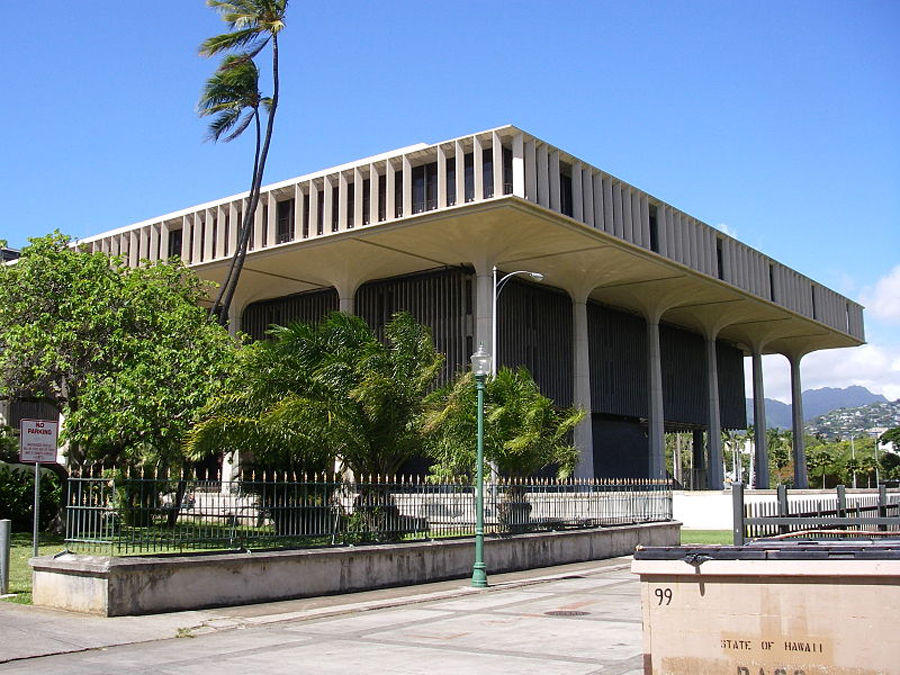HONOLULU — The Hawaii legislature has “identified climate change as one of the most urgent and long-term threats to the state.” Members of the Interagency Climate Adaptation Committee, which has representatives from more than a dozen state and county agencies,
HONOLULU — The Hawaii legislature has “identified climate change as one of the most urgent and long-term threats to the state.”
Members of the Interagency Climate Adaptation Committee, which has representatives from more than a dozen state and county agencies, is developing the Sea Level Rise Vulnerability Assessment and Adaptation Report by the end of 2017. A Kauai legislator, however, said the public should be more concerned with short-term problems rather long-term ones.
“We know (climate change) is going to affect the whole state, but I think the thing we have to worry right now is the actual surf doing more harm than the actual sea rise,” said Rep. Dee Morikawa, D-16 Niihau, Lehua, Koloa, Waimea. “Actually, we have to be more worried about natural disasters.”
Morikawa said she acknowledges climate change and the rise in sea level and is working with officials to construct buildings farther from shore.
“What we’re doing in the legislature is to get planning people to make sure they don’t allow structures close to shore like in the past,” she said. “Other than that, there really is nothing to do right away.”
Senate Pres. Ron Kouchi, D-8, Kauai, Niihau, said members of the committee also include the planning directors of each county to ensure that the unique needs of all four counties are included in the discussion.
“I believe that the committee (will) be diligent and thoughtful in their assessment, and I look forward to hearing their recommendations,” he said.
Rep. Chris Lee, D-51, Kailua, Waimanalo — chair of the Hawaii House of Representatives Energy and Environment Committee and one of the lawmakers responsible for the creation of climate adaptation committee — said because of Hawaii’s topography, the state is “vulnerable” to climate change and sea-level rise.
“Yet, we were one of the few coastal states that had not adopted a statewide climate adaptation plan,” he said.
Chip Fletcher, scientist with the University of Hawaii’s School of Ocean and Earth Science and Technology, and a team of researchers submitted a study in March, which stated that 92 percent and 96 percent of Hawaii’s shorelines will retreat as a result climate change by 2050 and 2100.
“Rising sea levels, exacerbated by stronger storms, will increase coastal flooding and erosion,” he said during the meeting on Wednesday. “It will damage coastal ecosystems and infrastructure and affect tourism, agriculture, military bases and other industries. This is on top of the impacts of higher sea surface temperatures and ocean acidification.”
Morikawa said for the time being, legislators are working on sand replenishment projects to combat beach erosion.
“We’ve done sand bypass in Waimea because of the way the harbor is designed, we’ve been losing sand on one side,” she said. “Statewide — like in Waikiki and Kaanapali, Maui — we’ve trying to make it easier for sand replenishment projects to go forward without going through the red tape of getting the permits.”
DLNR chairwoman Suzanne Case said the report is a top priority.
“Beach erosion, drought, coral bleaching and rising ocean temperatures are already having measurable impacts on Hawaii,” she said. “These threats include impact to our host culture, including impacts to coastal artifacts, structures and reduced availability of traditional food sources and subsistence fisheries.”
Reps. James Tokioka ,D-15, and Derek Kawakami ,D-14, did not respond to requests for comment.


